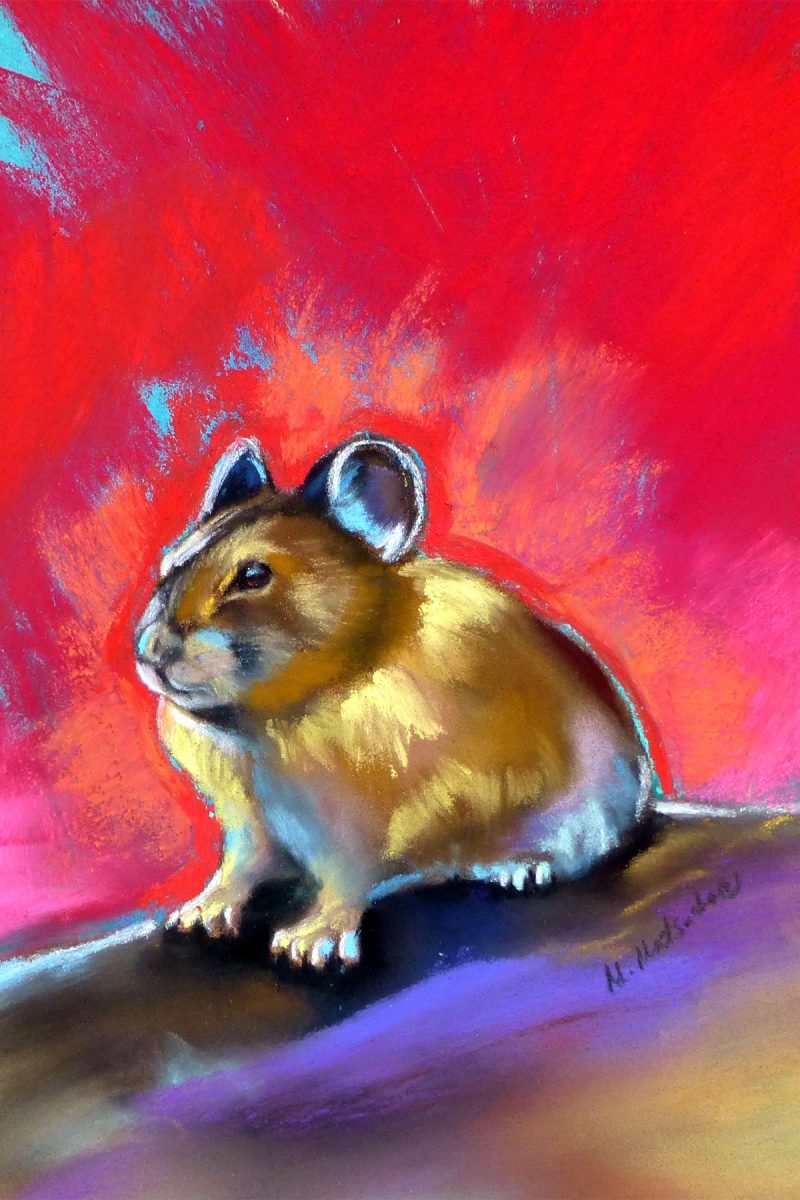Essay by April Craighead;
Art: “Pika“, by Mimi Matsuda;
Excerpt: Anyone who has spent time in the alpine areas of the Greater Yellowstone Ecosystem has heard the tell-tale “eep” of the American pika (Ochotona princeps); a denizen of mountains and wilderness. This captivating bundle of energy patrols a single territory, signals danger with its powerful cry and frenetically gathers “hay” or vegetation in the summer to store for a long and dangerous winter. Pikas do not hibernate but rely on the reserves of hay to feed them through the winter season. Sadly, the pika may be one of the first terrestrial species to become a victim of climate change due to its intolerance to warming temperatures and changes in snowpack. The problem for pikas is that they already live at the top of the mountains and they have nowhere left to go.
